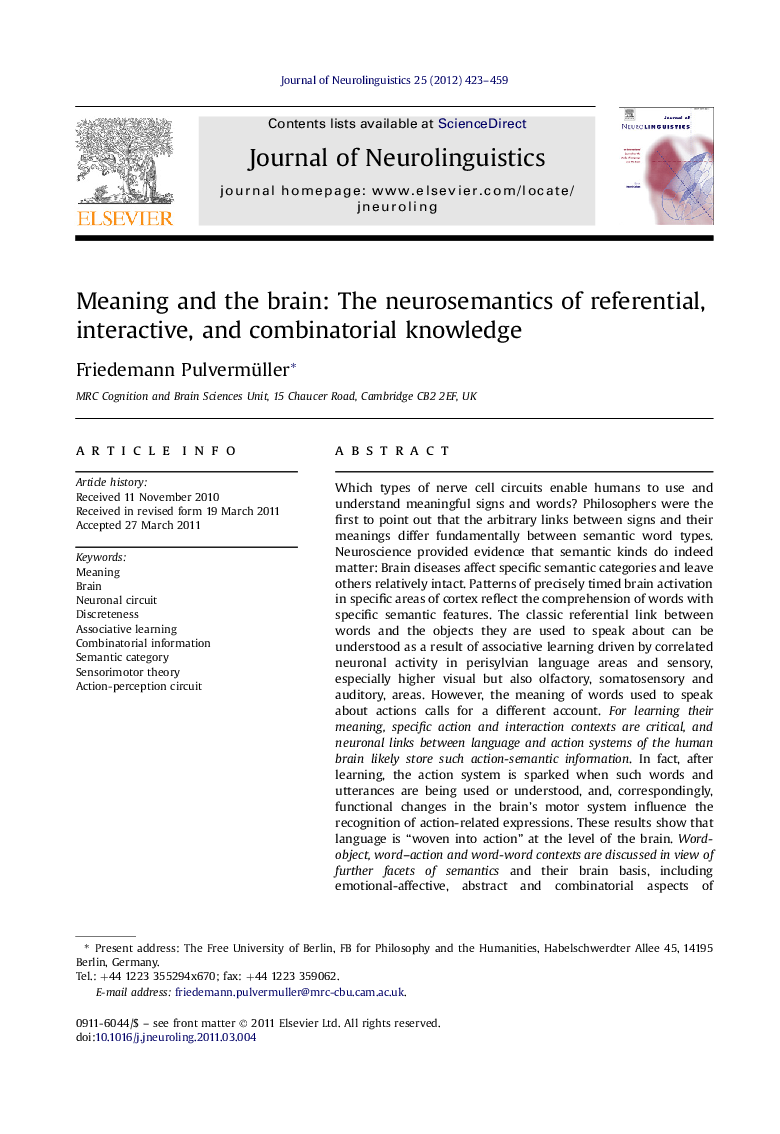| کد مقاله | کد نشریه | سال انتشار | مقاله انگلیسی | نسخه تمام متن |
|---|---|---|---|---|
| 911874 | 918096 | 2012 | 37 صفحه PDF | دانلود رایگان |

Which types of nerve cell circuits enable humans to use and understand meaningful signs and words? Philosophers were the first to point out that the arbitrary links between signs and their meanings differ fundamentally between semantic word types. Neuroscience provided evidence that semantic kinds do indeed matter: Brain diseases affect specific semantic categories and leave others relatively intact. Patterns of precisely timed brain activation in specific areas of cortex reflect the comprehension of words with specific semantic features. The classic referential link between words and the objects they are used to speak about can be understood as a result of associative learning driven by correlated neuronal activity in perisylvian language areas and sensory, especially higher visual but also olfactory, somatosensory and auditory, areas. However, the meaning of words used to speak about actions calls for a different account. For learning their meaning, specific action and interaction contexts are critical, and neuronal links between language and action systems of the human brain likely store such action-semantic information. In fact, after learning, the action system is sparked when such words and utterances are being used or understood, and, correspondingly, functional changes in the brain’s motor system influence the recognition of action-related expressions. These results show that language is “woven into action” at the level of the brain. Word-object, word–action and word-word contexts are discussed in view of further facets of semantics and their brain basis, including emotional-affective, abstract and combinatorial aspects of meaning. All of these aspects and corresponding neuronal circuit types interact in the processing of the meaning of words and sentences in the human mind and brain.
► A neurobiological model is offered that specifies three components of the human brain’s semantic system.
► An action—perception system embodying word and sentence understanding in category-specific sensorimotor circuit activation involving a range of cortical areas.
► An affective-emotional system supporting comprehension by activity in limbic circuits.
► A combinatorial system joining together linguistic representation according to their co-occurrence in sentence strings through combinatorial neuronal assemblies in left-perisylvian cortex.
► Brain imaging data, neuropsychological evidence and neurocomputational simulation studies are discussed in light of this model.
Journal: Journal of Neurolinguistics - Volume 25, Issue 5, September 2012, Pages 423–459